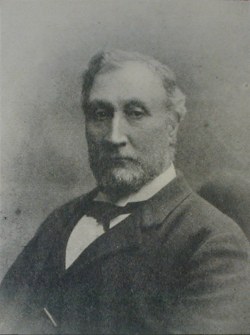 JOHN ANDERSON
JOHN ANDERSON JOHN ANDERSON
JOHN ANDERSONA RAILWAY servant of the oldest standing, the lately retired Manager and Secretary of the Callander and Oban Railway began his career sixty-one years ago as a boy clerk on the Edinburgh and Glasgow Railway at Falkirk. At that time locomotives were fired with coke made from Newcastle coal shipped to Grangemouth, and he himself takes pleasure in recalling the fact that he worked the first telegraph in Scotland, Bain's patent, in the presence of its inventor, on the occasion of a General Election before the ballot box came into use. When the instrument proved it would work with success, Bain, who was present, became wildly excited, and exclaimed, "I dreamt this!" From Falkirk Mr. Anderson went first to Edinburgh, at the opening of Waverley Station, and then to Glasgow, becoming at the latter post assistant to Mr. J. B. Thomson, General Superintendent. Next he held the post for ten years of Assistant Manager of the Edinburgh and Glasgow and Scottish Central Railways. He was never a day out of harness, and took part in the fight against the amalgamation of the Edinburgh and Glasgow and North British Railways. After that union he was in 1865 appointed Secretary to the Callander and Oban Company. Fifteen years later, when the line was continued from Dalmally to Oban, he was appointed Manager under the Caledonian Railway Company. In this capacity he superintended the building of the branches to Killin and to Ballachulish, and was the originator of many ingenious improvements and devices in the equipment of the line. He was the introducer of the wire screen which intercepts and gives warning of falling boulders on the hillside parts of the railway, and it is owing greatly to his care and ingenuity that during the last twenty-eight years there has been no hurt of the smallest sort to any passenger. He also devised the night-bell, a simple plan which cost only £75 for the whole line, which prevents the necessity of trams being held up at night, or on Sundays, or by snow-block. His efforts have been of much service in developing the Oban district and the trade of the Outer Hebrides. He is a member of the Glasgow Trades' House, ex-Deacon of the Cordiners, a J.P. for Argyllshire, and an enthusiast in gardening and photography. After his retirement in the spring of 1908 he was presented with a silver rose-bowl by the Railway men, and with his portrait by the public of Oban and neighbourhood.
Back to
Index of Glasgow Men (1909)